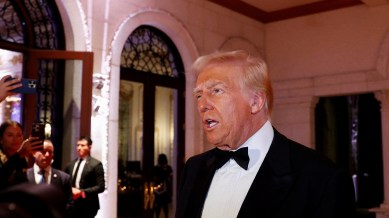India should focus on skill distribution since there is hardly any potential for growth in the H-1B benefits to India as it receives 72 per cent of the total visas under the programme, former Commerce Secretary Rajeev Kher said. “65 per cent of these visas are for people with computer skills, and India needs to look at skill distribution,” he said, adding that New Delhi may need to make sacrifices in some areas where higher tariffs have been imposed.
The researchers flagged that India is firm in the services sector in the US, but there is a high reliance on the H-1B visa as a tool for service delivery.
“Service delivery business models are changing rapidly, so the provision of services from BPOs, etc stationed in India may not benefit as much from the time-zone advantage any longer. India may like to increase its focus on professional services and maintenance, repair and overhaul (MRO) services, and similar other service sub-sectors,” the RIS said in a statement.
India’s final consumer goods segment may emerge as a significant trade target, as the country recorded its largest trade surplus with the United States in 2023, RIS said in its policy brief ‘Trade, Tariff and Trump’.
The trade equation tilted markedly in India’s favour, with imports from the US amounting to $2.9 billion while exports surged to $26.6 billion,” RIS said in its policy brief ‘Trade, Tariff and Trump’.
Story continues below this ad
“The new [US] trade regime may target a select few high-value items, particularly from the pharmaceuticals, fisheries, and jewellery sectors. If the trade restrictions adopt a broad-based one, segments such as chemical products, made-up textiles, and wood pulp may also come under scrutiny. In the event of product-specific actions, exports from pharmaceuticals, fisheries, and gems and jewellery sectors would likely bear the brunt. Conversely, if the measures expand to entire sectors, vulnerabilities may extend to pharmaceuticals, gems and jewellery, textiles, and fisheries, posing challenges to these crucial sectors,” the report said.
SK Mohanty, Professor at the RIS, said India has consistently maintained trade surplus with the US except during 2008, 2018 and 2022 where there was minor dip. Mohanty said tariffs will not only be imposed on India since several others have way more surplus with the US than India.
“The target country will not be India alone. Tariffs could be imposed on Germany and Japan too. However, it would be effective only if they are imposed on China, Mexico and Canada,” Mohanty said.
RIS said that maintaining a “sustainable edge” in the final consumer goods sector could pose a “critical challenge” for India in its trade relations with the US.
Story continues below this ad
“This segment was markedly one-sided, with India firmly in the driver’s seat. India exported $26.6 billion out of a total bilateral trade value of $29.5 billion in final consumer goods, capturing over 90 per cent of this trade segment. This subcategory alone accounted for one-fourth of the overall bilateral trade and two-thirds of the final goods trade. This segment alone generated a sectoral trade surplus of $23.7 billion, which constituted a remarkable 80.3 per cent of the final goods trade and 70.1 per cent of India’s overall trade surplus with the US in 2023,” RIS said.
The US is India’s largest trade partner, with bilateral trade reaching almost $120 billion in FY24 — slightly higher than India’s China trade. However, unlike China, India’s trade relationship with the US is favourable, which makes the US a vital source of foreign exchange.
Despite attempts to diversify exports, India’s dependence on the US has grown over the past decade. According to official 2022-23 data, the US accounts for 18% of India’s exports, compared to 10% in 2010-11. India’s export basket to the US is well-diversified, benefiting industries ranging from textiles to electronics and engineering.
However, Trump’s promised tariffs may primarily target China, given the far larger trade imbalance. A fresh round of US-China trade wars could benefit India by taking investments and manufacturing away from China.
Story continues below this ad
During his first term, Trump invoked national security provisions to impose a 25% tariff on steel and 10% on aluminium from India and other countries, breaking from the practice of not targeting friendly nations. Biden chose to negotiate with India and the European Union rather than lifting these tariffs.
Trump has repeatedly voiced his frustration at high tariffs in India, which affect US companies like Harley-Davidson. At a rally last month, he criticised China, Brazil, and India, and called India a “tariff king” and “trade abuser”. Notably, average tariffs in India rose to 18.1% in 2022 from 13% in 2014, which resulted in a lack of competitiveness among Indian industries compared to countries such as Vietnam, Thailand, and Mexico. India cut tariffs on several input items in the last Union Budget.
